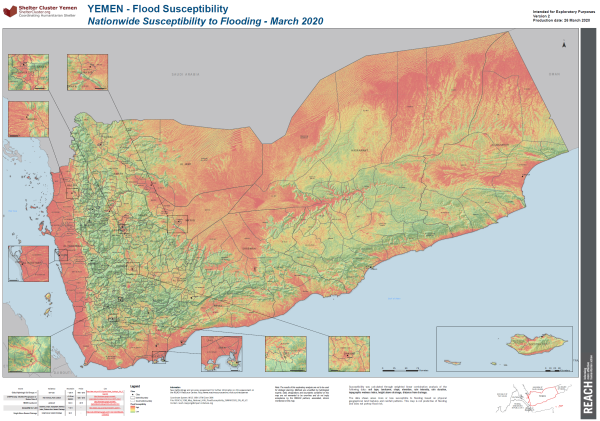Yemen
2020-12 Factsheet
Highlights
-
Shelter Cluster estimates that of the total 7.3 million people who require Shelter/NFI assistance, almost 2.7 million individuals are in acute need.
-
Shelter living conditions directly affect not only the family’s safety and protection but also their health and hygiene.
-
Shelter Cluster assisted 870,396 IDPs, returnees, and vulnerable host community members during the fourth quarter of 2020.
-
The winterization support was provided to 219,577 people, including 73,881 people in the acute category experiencing low weather temperatures.
-
Heating, cooking, and fire security being an increasing concern.
-
Significant funding shortfall remains a major and outstanding challenge in the Shelter and NFI response.
-
Provision of longer-term shelter solutions, including house repairs, remains limited.
NFI
Shelter
Coverage against targets
Need analysis
-
Aside from the continuous displacement and needs generated by armed conflict, Yemen is facing seasonal and natural hazards in addition to a weak housing capacity necessary to implement long-term solutions and to break from a constant and recurrent emergency.
Shelter Severity Scores and PIN 2021 report estimates that of the total 7.3 million people who require Shelter/NFI assistance, almost 2.7 million individuals are in acute need. Numerous surveys and studies constantly indicate that shelter living conditions directly affect not only the family’s safety and protection but also their health and hygiene, particularly for those experiencing continuous degradation of their already substandard living conditions. IDP families, especially those living in camp-like settings, experience overcrowding, increasing eviction threats, and other risks related to flood-prone areas and/or proximity to the front lines.
Response
- Despite the current operational constraints, Shelter Cluster assisted 386,636 IDPs, returnees, and vulnerable host community members during the fourth quarter of 2020.
- Since the release of the winterization recommendation, 165,806 people have been assisted, including 49,691 people in the acute category experiencing low weather temperatures. The assistance provided includes Personal insulation (clothing and blankets), Heating devices/fuel, and Shelter insulation.
- Heating, cooking, and fire security being an increasing concern, Shelter Cluster launched in collaboration with CCCM and Protection cluster a survey related to the types of stoves and their use all around Yemen. The survey is expected to be published during the 1st quarter of 2021.
- The NFI Technical Working Group finalized the NFI guidance, shifting practices from a one-fits-all approach to several kits better fit with the family composition. Likewise, the Shelter TWIG finalized the Enhanced Emergency Shelter Kit, incorporating the beneficiary’s feedback to reinforce the shelter structure and expand its life-span.
Gaps / challenges
- Significant funding shortfall remains a major and outstanding challenge in the Shelter and NFI response. This has impacted the winterization support programs leaving more than 1.2 million people in need without assistance.
- Provision of longer-term shelter solutions, including house repairs, remains limited due to Housing Land and Property issues and inadequate funding, impacting sustainable return and other durable solutions.

